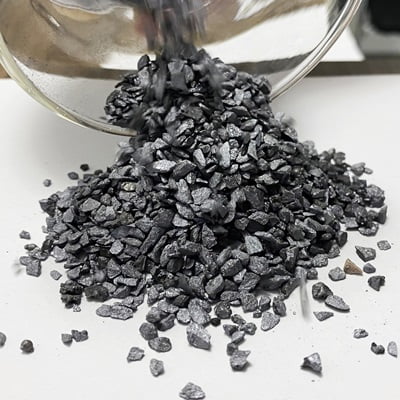NEWS
Ferro Silicon and Silicon Carbide: A Comprehensive Comparison for Steel Producers
Ferro silicon and silicon carbide are two commonly used deoxidizers in the steelmaking process. Both materials are added to molten steel to remove oxygen, which can cause defects in the final product. However, there are some important differences between these two materials that can affect their performance and cost.
Ferro silicon is an alloy composed of iron and silicon, while silicon carbide is a compound made of silicon and carbon.
Reaction with Oxygen
Ferro silicon reacts with oxygen in the steel to form silicon dioxide, which floats to the surface of the molten steel and is removed. This process is known as slagging. The resulting slag can be recycled or sold as a byproduct.
Silicon carbide, on the other hand, reacts with oxygen to form carbon monoxide gas, if not controlled properly. this gas can lead to porosity in the steel, which can weaken the final product.
The use of ferro silicon results in a lower carbon content in the steel, while silicon carbide can increase the carbon content due to the formation of carbon monoxide gas.
Adding Weight
Ferro silicon is an alloy composed of iron and silicon. It is produced by smelting a mixture of iron ore, coke, and silica in a furnace. Ferro silicon is typically added to molten steel in amounts ranging from 0.1% to 1.5% by weight.
Silicon carbide, on the other hand, is a compound made of silicon and carbon. It is produced by heating a mixture of silicon dioxide and carbon in an electric furnace. The resulting material is a crystalline solid with a hardness similar to that of diamond. Silicon carbide is typically added to molten steel in amounts ranging from 0.1% to 0.5% by weight.
Carbon Content
Another difference between ferro silicon and silicon carbide is their effect on the carbon content of the steel. The use of ferro silicon results in a lower carbon content in the steel, while silicon carbide can increase the carbon content due to the formation of carbon monoxide gas.
Ferro silicon contains no carbon, so it does not affect the carbon content of the steel.
Silicon carbide contains carbon, which can increase the carbon content of the steel if not properly controlled. This can be an advantage in certain applications where a higher carbon content is desired, but it can also be a disadvantage if the carbon content needs to be kept low.
Application
Ferro silicon is more commonly used due to its reliable performance. It is effective at removing oxygen from molten steel and producing a clean, high-quality final product. However, it does not add any carbon to the steel, which can be a disadvantage in certain applications.
Silicon carbide, on the other hand, can add carbon to the steel, which can be an advantage in certain applications where a higher carbon content is desired.
You May Like to Learn More...
Contact Us

JBT produces and supplies silicon metal and ferrosilicon products, mainly products are silicon metal 553, 441, 421, 411 3303,2202, 97, silicon carbide, carbon raiser for steelmaking and casting industries. We also make electrolytic manganese metal, inoculants and nodulizers.
Get in Touch
- info@jbtmetals.com
- +86-372-5032025
- +86-15937282819
- Send Inquiry
- Online Chat
- Qugou Town, Anyang City, Henan Province of China


